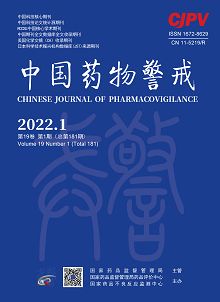|
|
Observation of 110 cases of adverse drug reactions induced by iodixanol
ZHANG Dan, LI Li, XU Hengwei, ZHU Yaning, ZHANG Peng, ZHOU Nan
2022, 19(1):
83-86.
DOI: 10.19803/j.1672-8629.2022.01.18
Objective To analyze the characteristics and patterns of adverse drug reactions (ADR) caused by iodixanol during angiography, and to provide reference for control of risks of clinical medications. Methods A clinical pharmacist performed pharmacy monitoring of 415 patients who used iodixanol between July 1, 2018 and May 31, 2019 in the Cardiology Department of Shaanxi Provincial People's Hospital. Patients were asked while the time ADR occurred, symptoms and severity of ADR after using iodixanol were recorded. Other information including gender, age, weight, and levels of creatinine was retrieved with the HIS. Results Among the 415 patients, 359 entered valid information of ADR, A total of 110 patients developed ADR. The overall rate was 30.64%, compared with 14.55% for immediate reactions, 85.45% for delayed reactions, 73.64% for mild reactions, 25.45% for moderate reactions, and 0.91% for severe reaction. According to the statistics, there were a total of 181 cases of ADR involving systems and organs. Damage to the skin and its accessories accounted for 25.41%, 27.62% for the digestive system, 24.31% for the nervous system, 3.87% for the cardiovascular system, 9.39 % for the respiratory system, and 1.10% for the urinary system. Systemic adverse reactions made up 8.29%. One patient had anaphylactic shock, and two suffered from contrast-induced acute kidney injury (CI-AKI). Conclusion The incidence of adverse drug reactions associated with iodixanol is higher than was previously reported. Preoperative preventive evaluation and measures should be enhanced to reduce the incidence of adverse reactions and improve the safety of medications.
References |
Related Articles |
Metrics
|
